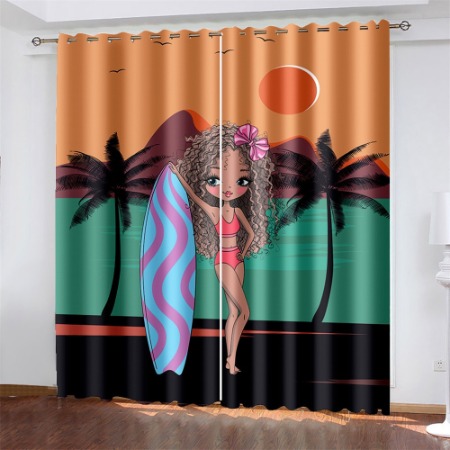African wax imitation fabric, also known as Ankara, is a type of cloth that's used to make clothing and accessories. It's a 100% cotton fabric and it was originally produced in Holland, but now manufactured in Africa.Dutch wax prints were first developed in the 19th century as a way to mass-produce batik fabrics inspired by Indonesian traditional methods of tie-dyeing cloth. They quickly became popular in West African markets.African wax imitation fabric is a beautiful and unique fabric that has become deeply associated with African culture and history. Its origins were brought to Africa by Dutch settlers in the 19th century.
There is a wealth of meanings associated with these fabrics that vary from country to country, and even within the same country! It’s often a symbol of change, prosperity and freedom. This pattern shows multiple birds flying in the same direction.African wax imitation fabric is a type of cotton fabric with bold colors and densely-printed patterns. It is a textile that is popular throughout Europe and Africa.In the 19th century, Dutch textile merchants adapted the Indonesian batik technique to produce industrially wax-printed cotton designs. These fabrics were initially rejected by international competitors because they were imperfect and had geometric patterns.

However, this imperfection became an important feature for African consumers. They saw imperfections as symbols of the fabric's origins, colors, patterns and signs.African wax imitation fabric is an excellent choice for a variety of dressmaking and craft projects. These 100% cotton fabrics feature vibrant colors and bold patterns that are reminiscent of traditional wax print styles from West Africa.These authentic fabrics are made in Ghana, Nigeria, and Tanzania using locally-grown cotton yarn. They are hand-made by small-scale workshops, which are typically run by entrepreneurs.The designs are printed onto the cloth using a process called batik, which is an ancient art form. The wax resist dyeing technique and special machinery creates unique bubbling and marbling effects on the fabrics.
Wax print fabric is a textile with bold and colourful designs, ranging from flowers to motifs of clasping hands. It originated in Indonesia and was introduced to Africa through trade, military mobilisation and missionaries.Traditional batik fabrics are made by hand. The process involves draping cloth over a wooden frame and pouring wax on the fabric.Afterward, the fabric is immersed in dyes. The wax blocks the dye and creates a pattern or design.The Dutch adapted this technique and mechanised it, which allowed them to mass produce and sell the fabric. This was a cheaper and quicker method than the hand-made one, so they started making cheap batik-inspired imitation fabrics in The Netherlands.Today, African wax print is manufactured in sub-Saharan Africa and sold around the world. Its popularity is due to its vibrant colours and distinct patterns.

 English
English Español
Español








